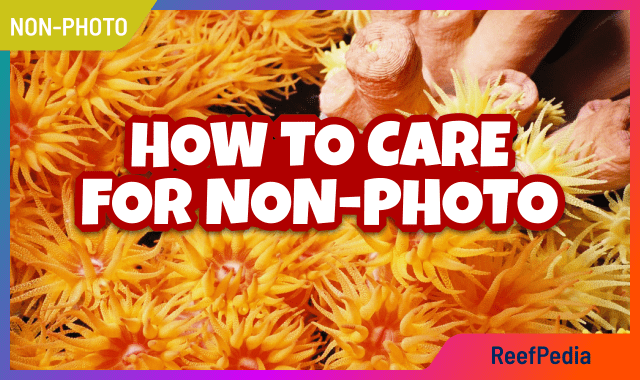Table of Contents
Non-photosynthetic corals – General information
Setting up a non-photosynthetic coral (NPS) aquarium is a greater challenge and requires more commitment than maintaining photosynthetic corals. Non-photosynthetic corals do not obtain nutrients through photosynthesis from zooxanthellae; instead, they actively capture food particles from the water column.
Although maintaining NPS corals may seem challenging, appropriate filtration methods and systems can make the process significantly easier. Planning an aquarium for such corals involves several key principles.
First, non-photosynthetic corals require more frequent feeding, sometimes even multiple times a day. To meet this requirement, it’s essential to provide effective filtration and good water circulation. It’s advisable to design a system that allows for temporary filtration shutdowns during feeding. This helps prevent the removal of food from the water before the corals have a chance to consume it.
Lighting in an NPS aquarium serves primarily an aesthetic purpose, enhancing the colors of the corals. It is not required for their nutrition, so it doesn’t need to be as intense as in aquariums with photosynthetic corals.
Creating a suitable environment for NPS corals is a process that requires both knowledge and experience. However, when properly managed, it can be incredibly rewarding and create a stunning display.
In the article titled The most popular NPS in saltwater aquariums, you’ll find many details about cultivating selected species of these corals.

Water filtration and non-photosynthetic corals
To meet the specific requirements for water filtration in a non-photosynthetic coral (NPS) aquarium, a more efficient filtration system is necessary. After feeding, the filtration system must quickly cleanse the water to remove leftover food particles and other impurities.
Mechanical filtration: Using an automatic filter roller is recommended, as it efficiently captures mechanical particles from the water. For example, the Smart Roller by Reef Factory allows water to pass through a special filter material that traps contaminants. Once the material becomes dirty, it automatically advances to expose a clean section, continuing the filtration process.
Protein skimmer: Another essential stage of water purification involves an oversized protein skimmer, which effectively removes proteins and other organic pollutants from the water. To ensure its efficiency, it’s crucial to clean the skimmer cup every 2–3 days.
Frequent water changes: Regular but small water changes are also beneficial – for example, 2% daily, ideally after feeding. This practice helps eliminate waste from coral feedings and balances the water parameters in the aquarium.
Biological filtration: Using additional media for biological filtration helps maintain appropriate water parameters. Bacterial supplements can also be added to increase the bacterial population in the system, improving the removal of organic waste. Examples include live rock in the sump, various bio-plates, and biological balls.
Non-photosynthetic corals and their feeding
At the time of writing this article, an automatic feeder for frozen foods has yet to appear on the market, so this aspect cannot be automated. However, it’s advisable to incorporate regular feedings with frozen foods into the daily routine. Recommended frozen foods include rotifers, baby brine shrimp (artemia), and cyclop-eeze. The choice of food should match the specific needs of each coral species. Some non-photosynthetic corals require fine food, while others prefer larger particles. For beginners, mixing different types of food and observing the corals’ response can help determine their preferences.
It’s important, however, to ensure that excess food doesn’t settle on the aquarium floor. If the circulation system cannot handle the leftovers, manual removal by siphoning may be necessary.
Other types of food
Other food types include phytoplankton, amino acids, and dry foods. These alternatives should also be considered depending on the specific needs and types of corals being cultivated.

Water circulation and non-photosynthetic corals
Non-photosynthetic corals require strong water circulation, which is essential for two main reasons. First, it allows for even distribution of food to the corals, facilitating their feeding and waste removal. Second, it helps maintain aquarium cleanliness by moving excess food towards the sump. Additionally, mechanical filtration and other filtration systems work to remove surplus food from the water. Strong circulation is therefore not only helpful but often essential for effectively maintaining the cleanliness and health of the aquarium ecosystem.
Summary
In this article, I’ve outlined methods for adapting a marine aquarium to support the cultivation of non-photosynthetic corals. These corals require additional feeding, which may seem labor-intensive, but proper aquarium design can significantly simplify the process. Thoughtful placement of filtration elements and strong water circulation are essential for maintaining a healthy aquarium. Regular feeding, tailored to the needs of the corals, allows for the enjoyment of a beautiful NPS coral aquarium.
To deepen your understanding of non-photosynthetic corals, check out the article titled Types of corals: SPS, LPS, soft, and non-photosyntheti.
About the author

Marek Protasewicz
Reefkeeping has been my passion for over 10 years now. I love learning. The hobby has taught me many valuable lessons, patience being the best example. Combining work and passion is my path. I run Crazy Coral, a marine aquarium shop, for a number of years. Building this business from the scratch I learnt from my own mistakes at a heavy cost.
Later I managed a project aimed at development of methods for quick growth of Corals in non-natural conditions. The project was carried out by Get Sales, Poland. Presently, I am responsible for distribution strategy at Reef Factory, of which I am a co-founder. The company produces smart devices for marine aquaristics. The last projects I have been involved in are Social Reef and ReefPedia.



